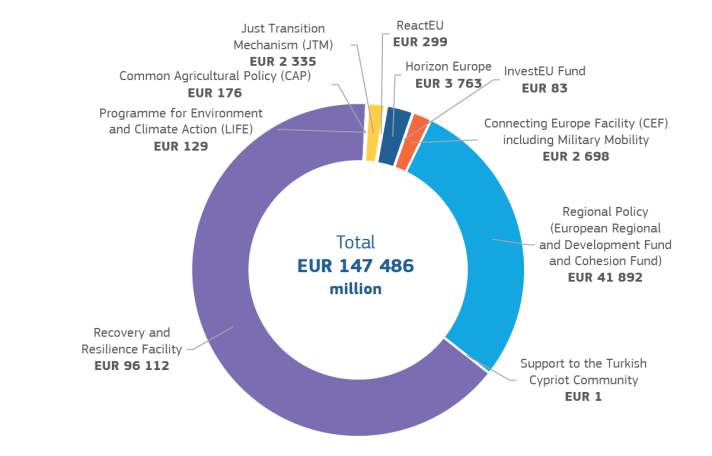The EU has been working for decades to reduce air pollution to levels that do not give rise to negative impacts on, and risks to, human health and the environment. Air quality has improved in the European Union over time, and emissions of several air pollutants have decreased. This has been possible thanks to EU clean air legislation and efforts to integrate environmental protection requirements in general, and clean air priorities, into sectoral policies, including stricter control of the release of harmful substances into the atmosphere. Joint efforts at the EU, national, regional and local levels (partly due to the provision of resources from the EU budget to initiatives contributing to clean air objectives) have played an important role in delivering progress. The Commission has proposed in October 2022 to align more closely with the 2021 guidelines of the World Health Organization, which need to be met across the EU.
What do we do?
EU funding has been made available and successfully used by Member States under various financial streams, by either directly supporting clean air projects or effectively mainstreaming clean air objectives in other investments (e.g. infrastructure and rural and regional development). To monitor progress in the Member States’ uptake of EU funds for clean air objective, the Commission tracks EU funding contributing to clean air by assessing the extent to which each funding stream contributes to this objective. This monitoring will contribute to the better implementation of clean air policies in the Member States. It also responds to the Commission’s obligation to report on Member States’ uptake of EU funds to achieve the objectives of Directive (EU) 2016/2284 on the reduction of national emissions of certain atmospheric pollutants, under Article 11(1)(c).
In order to comply with the directive’s reporting obligation, the programme performance statements for relevant programmes include the individual programmes’ contribution to clean air throughout the 2021-2027 multiannual financial framework. The precise methodology for tracking the contribution towards clean air objectives was published along with the implementation report mandated by Article 11 of the directive. Values for the 2021-2027 multiannual financial framework rely mostly on estimates. For some programmes, such as Horizon Europe, the work programmes for coming years still have to be defined in detail, or amendments in agreed regional funding may be introduced, as the past has shown. Data for the 2021-2027 multiannual financial framework are not yet available for bottom-up funding programmes such as InvestEU and LIFE, as projects for the coming years have not yet been chosen. Therefore, for these two programmes, the clean air contribution is based on the 2014-2020 multiannual financial framework. Further data are available in an annex to this section.
How much do we spend?

Projected clean air contribution from 2021 to 2027 (million EUR).
Source: European Commission.
For the 2021-2027 period, the EU budget – including NextGenerationEU – is dedicating EUR 147 billion, or 8.3% of the multiannual financial framework, to the clean air objective.
Clean air methodology
The amounts above are calculated based on commitment appropriations as following:
- For direct management, estimates are prepared by each service based on the most updated data available. For future estimates, work programmes and historical values are taken into consideration.
- For shared management, past and future figures are presented on the base of the programmes and CAP Strategic Plans agreed with the Member States, and updated according to the annual reports.
- For indirect management, the figures are based on the existing targets and agreements with the implementing partners, as well as their annual reports.
